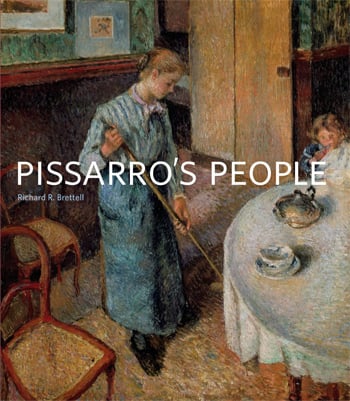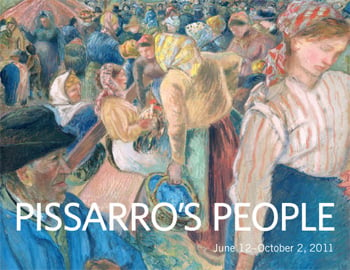
JUNE 12–OCTOBER 2, 2011
After the revolution
In France, the period between the revolution of 1789 and the Paris Commune of 1871 was marked by a series of social and political upheavals. As an anarchist, Pissarro believed that society could—and would—be completely transformed by widespread insurrection followed by an era of cooperative action. He expected this revolution would happen soon—though perhaps not during his own lifetime—and between the late 1880s and 1901 he made a series of highly finished paintings that were meant to demonstrate what the new anarchist utopia would look like. Invariably, these scenes are set in the countryside, as the ideal society would be based on communal, rural labor. The paintings are carefully composed rather than observed from life, and their surfaces are highly worked. The landscape appears limitless: hedgerows, fences, or other delineators of property are absent, as is the sense of the local or the specific. The work—hay baling, planting, and picking—is done by groups of healthy, strong laborers dedicated to their collective purpose. These paintings, perhaps more than any of Pissarro’s other works, illustrate the degree to which his art and his political beliefs were inextricably entwined.

Pissarro began working on Apple-Picking in 1881 but did not consider the painting finished until 1886, when he exhibited it at the final Impressionist exhibition. He spent years extensively reworking the painting’s surface in the pointillist style of the Neo-Impressionists Georges Seurat and Paul Signac, who shared the older artist’s artistic ambitions and political beliefs.

In contrast with the monumental Apple-Picking, this small painting shows youthful harvesters in an expansive field composed of thousands of colorful dots of paint. The horizon line curves noticeably, suggesting that Pissarro was showing but one, luminous segment of the world as it might appear in the future.
Click to download the exhibition brochure (PDF) from Pissarro's People.

Richly illustrated with more than 200 paintings, works on paper, and archival images, this compelling volume offers a definitive portrait of one of the most passionately political painters of the nineteenth century.

